
I’m excited to share my Top 15 favorite orange flowers with you because:
1) I absolutely love orange in my garden, and
2) In all the years I’ve been designing gardens, orange is hands-down the color that gets the most hate.
Time and again, new clients repeatedly ask me to avoid using orange in their gardens. I completely understand where this bias comes from.
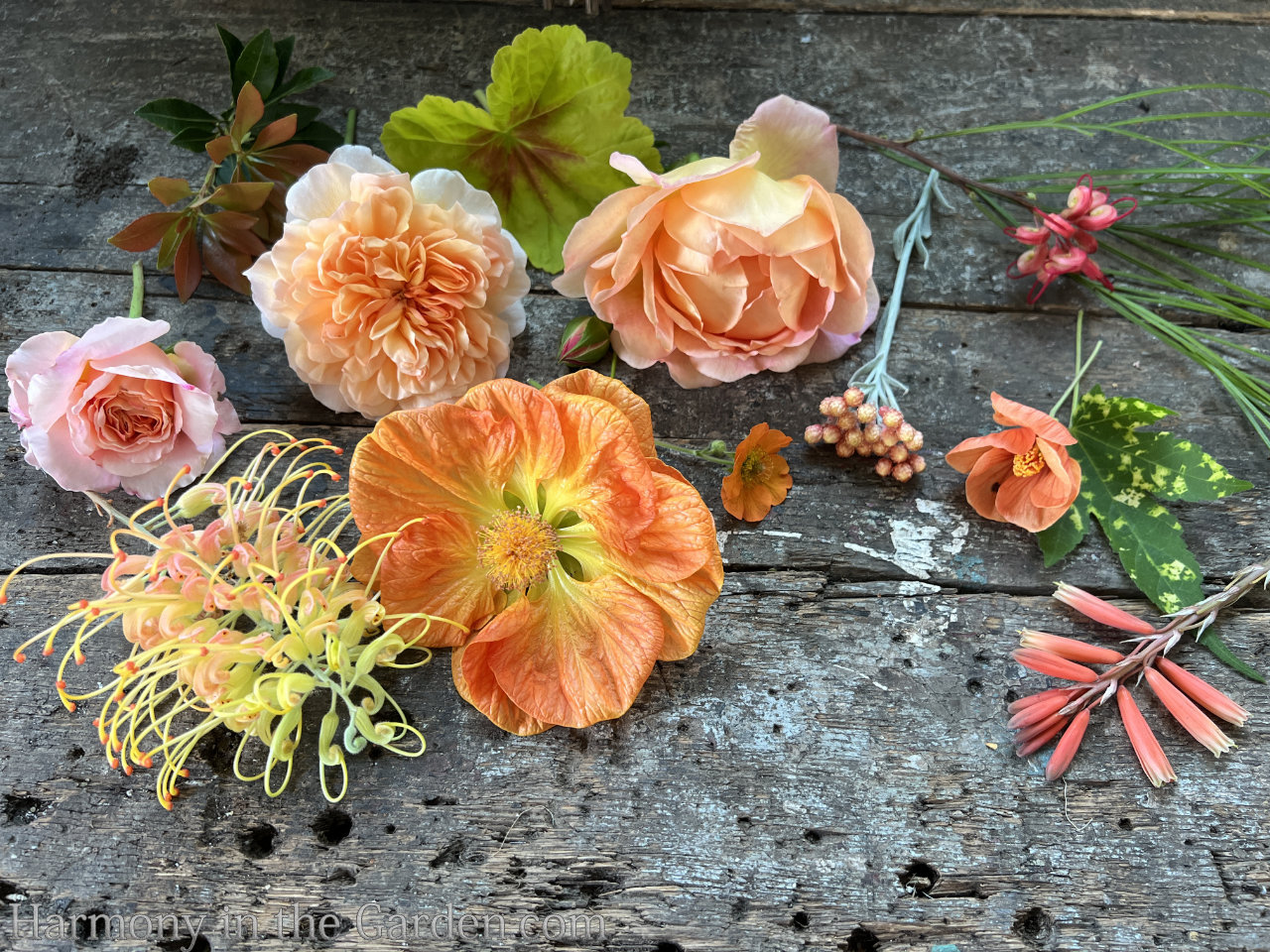
It often stems from driving past that one house in the neighborhood filled with marigolds lined up in a perfectly straight row along the front pathway.
Sound familiar?
However, once I show how many beautiful shades of orange there are and how to use this color in the garden, more often than not, they join me on the orange bandwagon.
So, without further ado, here are my Top 15 orange flowers to consider adding to your garden!
1. Helenium ‘Mardi Gras’
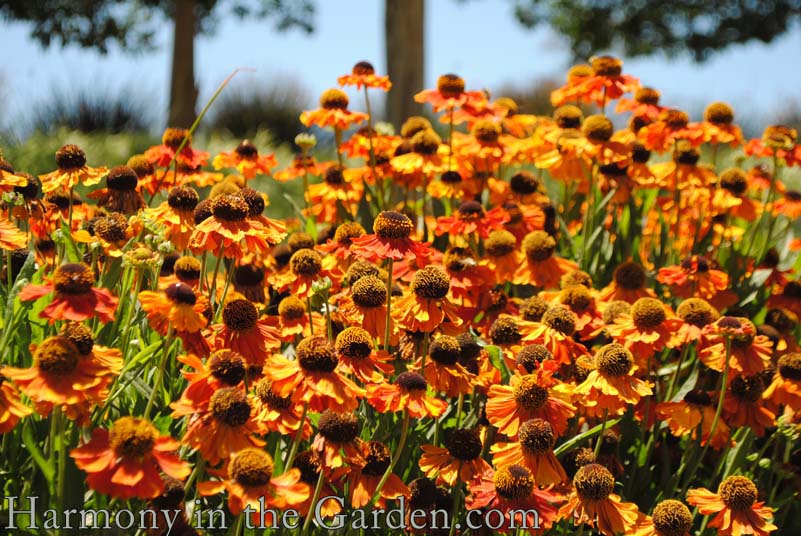
Also known as sneezeweed, which is such an unfortunate and unfair nickname.
Contrary to popular belief, they don’t cause people to sneeze at all.
Where’d this name come from? I’ve read that eons ago their leaves were used as a type of snuff – hence their unfortunate nickname.
2. Abutilon ‘Tiger Eyes’
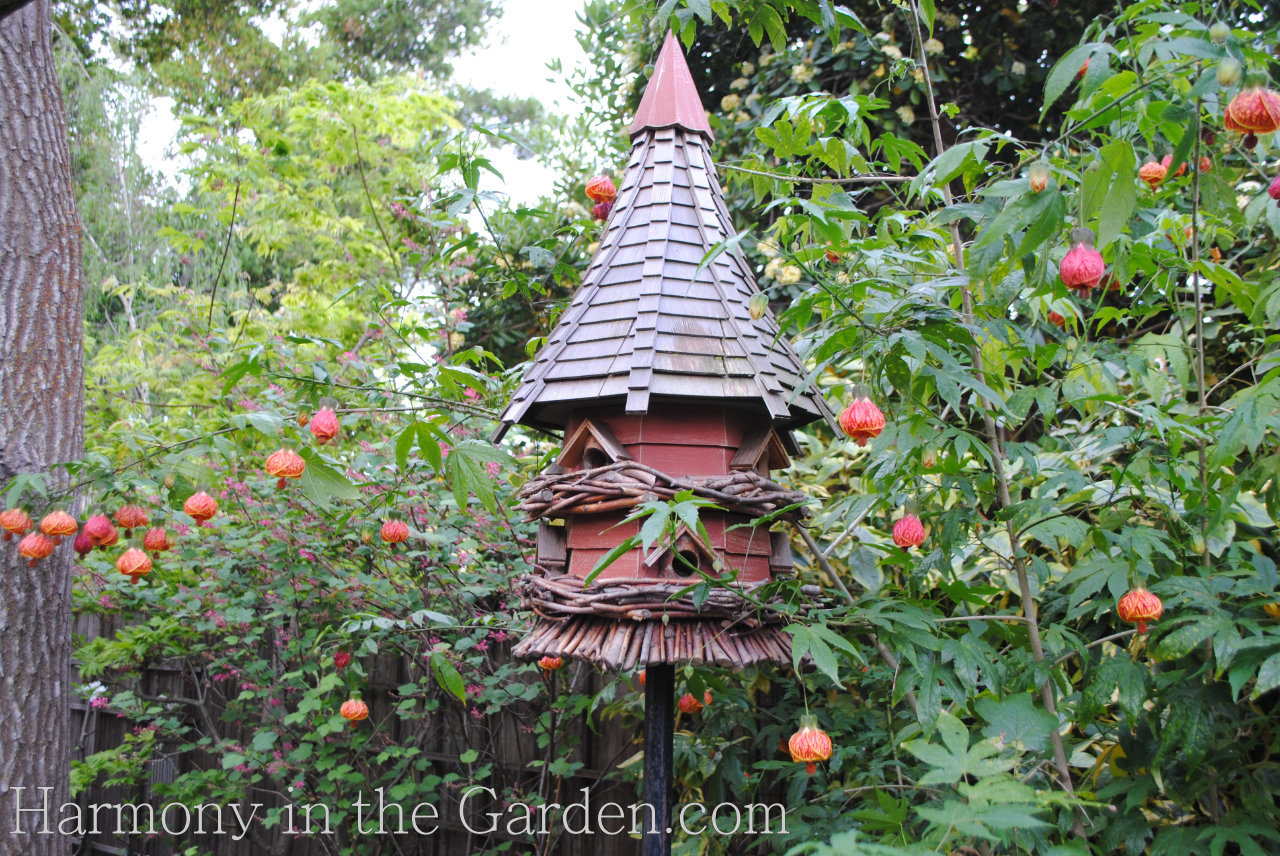
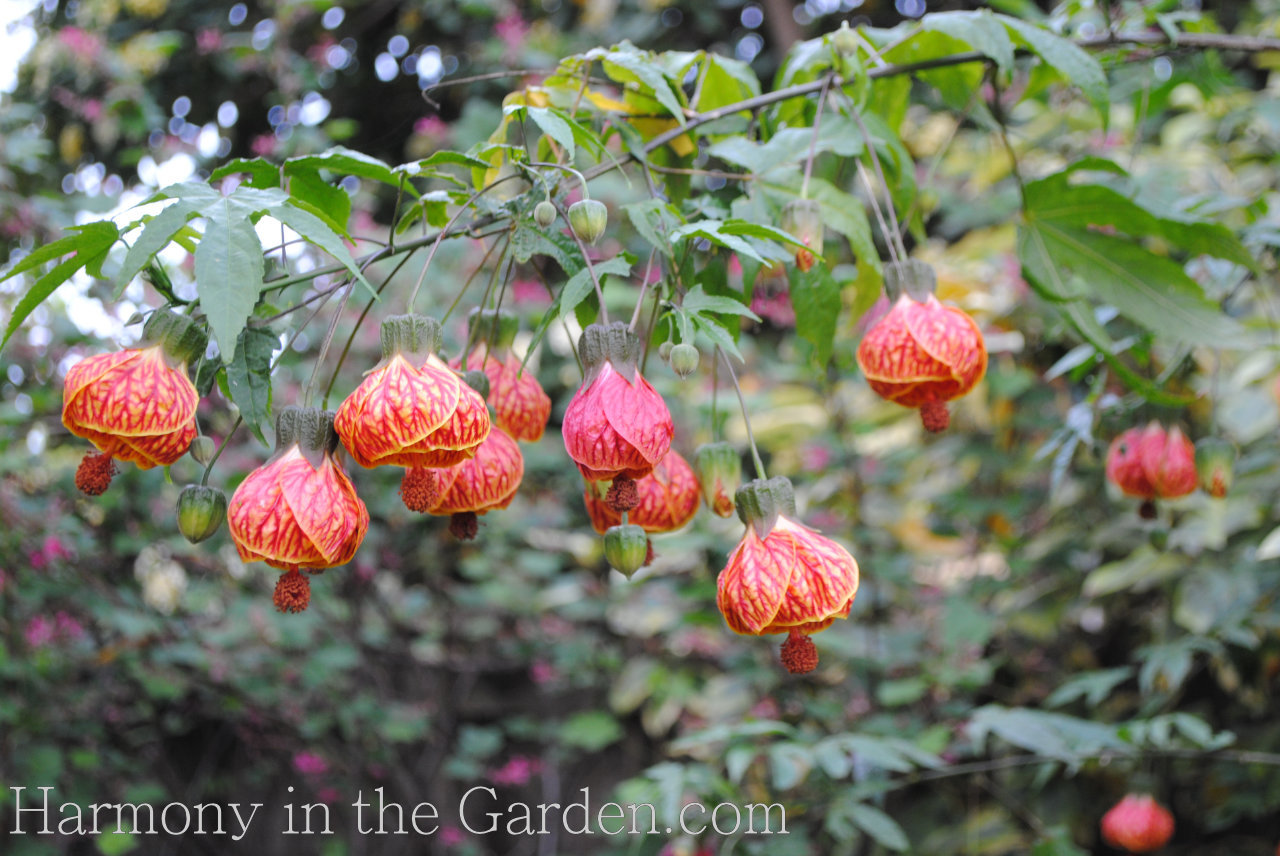
Towering to 8-feet, the two-tone orange flowers of this abutilon resemble floating paper lanterns, bobbing throughout the garden bed.
When I recently moved out of my garden (above) it took me a year to find this variety, but thanks to a vendor at the Northwest Flower & Garden Festival I was able to purchase not one but three to add to my new garden! I can’t wait for them to hurry up and GROW!!
3. Papaver orientale ‘Allegro’ (Oriental Poppy)
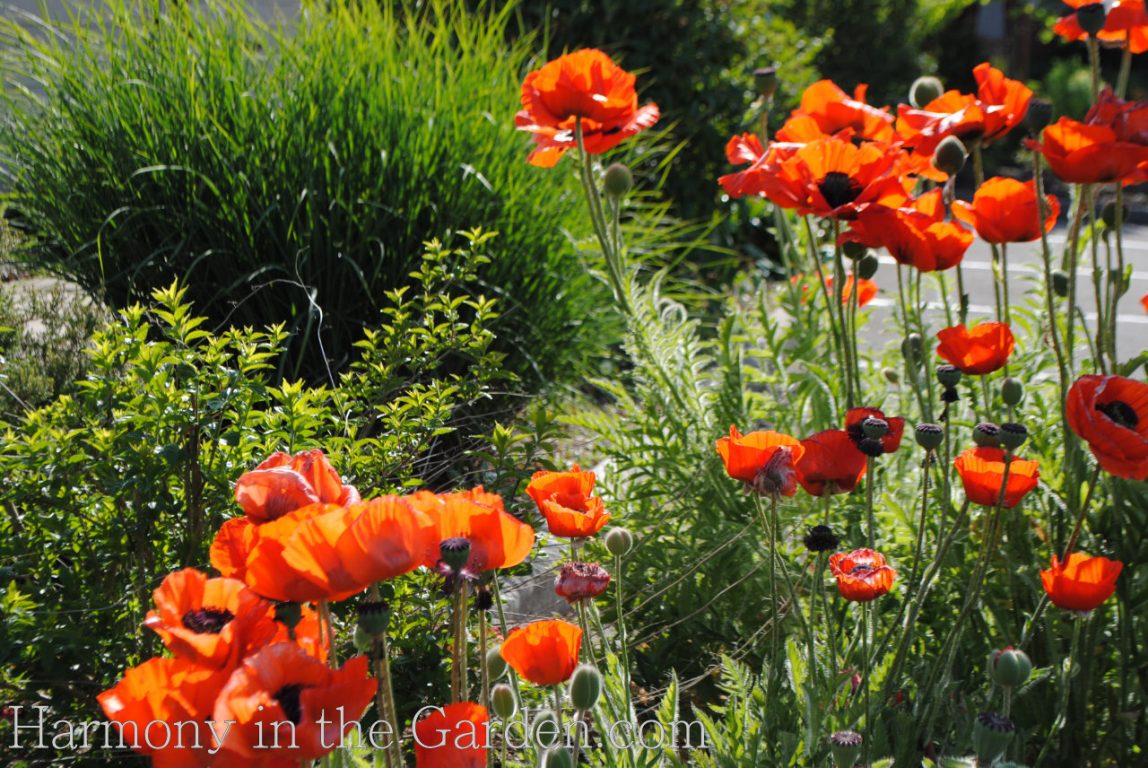
Placed in a full-sun garden bed, the bright orange, tissue-paper petals of these Oriental poppies will glow like none other.
Blooming in early summer, the 24″ stems add a lovely mid-border burst of color, and might even reappear again in the fall (if you’re lucky!)
4. Angel Trumpet (brugmansia sanguinea)
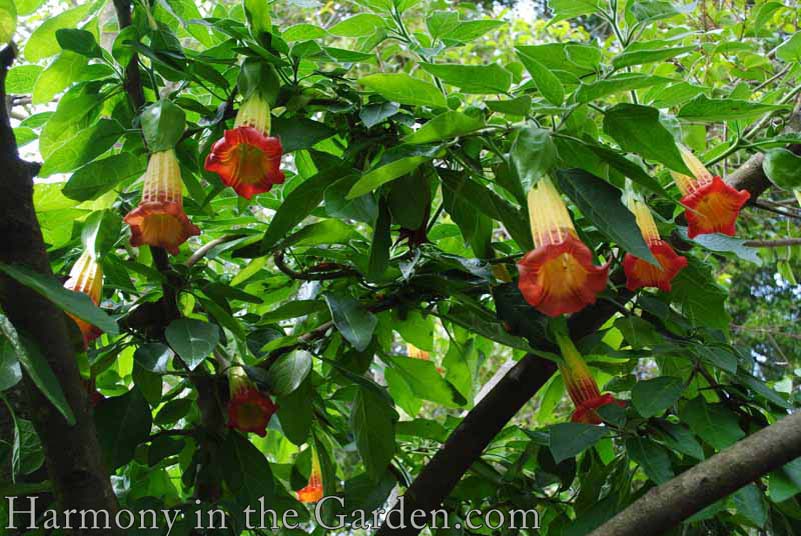
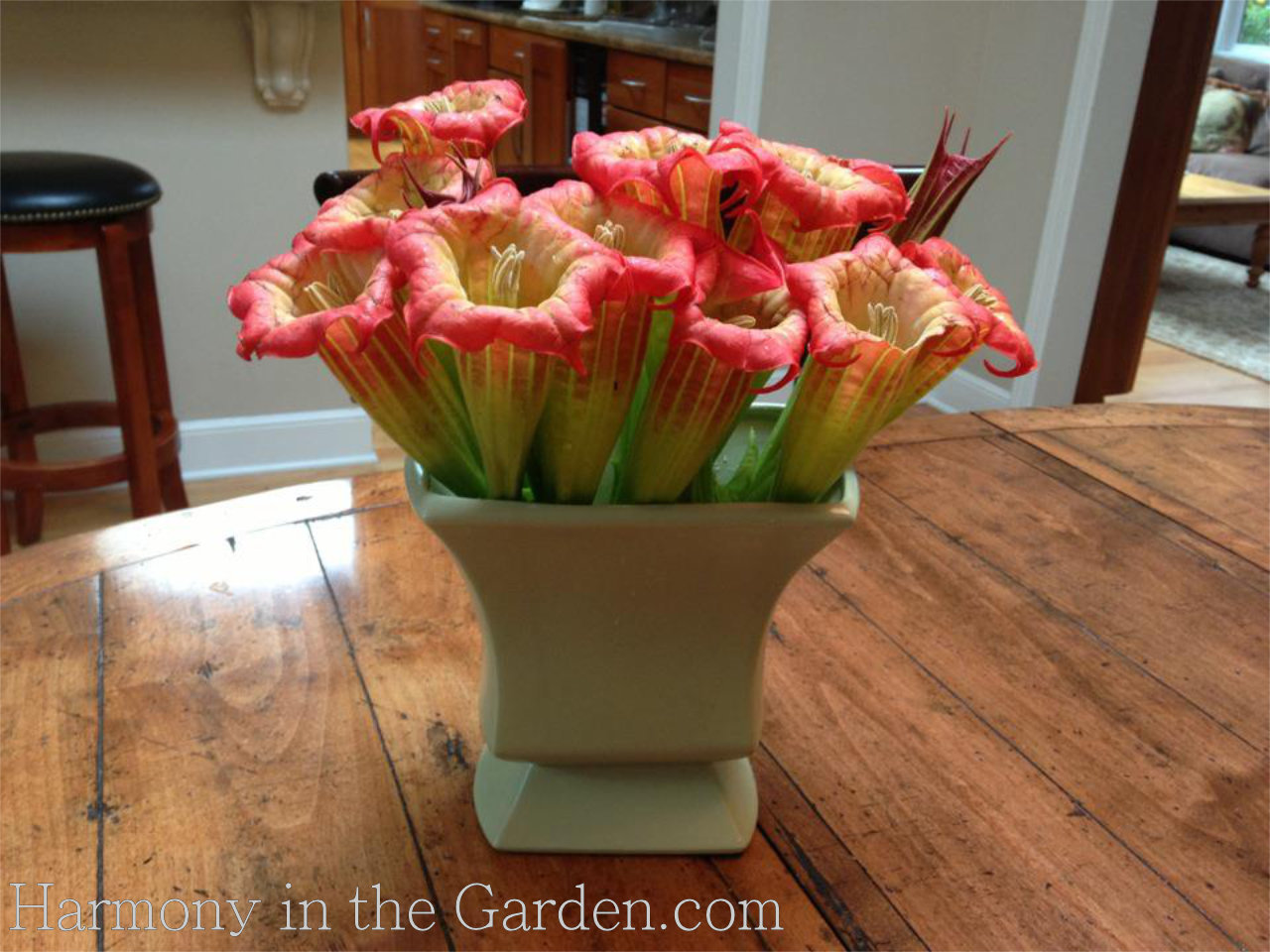
This variety is a much hardier version of the other brugmansias out there, tolerating colder winters and requiring a little less water than their thirstier cousins.
As a trade-off for their hardiness, though, these spectacular blooms have no scent. Zip.
But I don’t care as I much prefer their hot orangey-red color over the other pastel versions any day. And if a big wind storm knocks the blossoms to the ground, they make a pretty bouquet!
5. Orange Siberian Globeflower (trollius ircuticus)
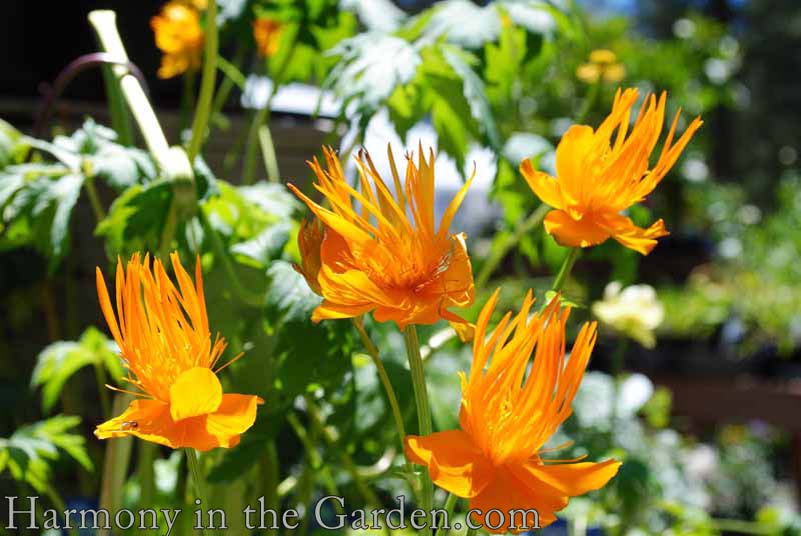
Oh, how I wish these were more drought-tolerant!
Unfortunately, they aren’t, preferring consistently moist soil. I’ve had good luck planting this in containers (where it’s much easier to control the moisture level) and along a creek-bed that runs through a client’s property.
It has a reputation for re-seeding a little too prolifically, but with our lack of summer rainfall, I’ve never seen a single seedling.
6. Lion’s Tail (leonotis leonurus)
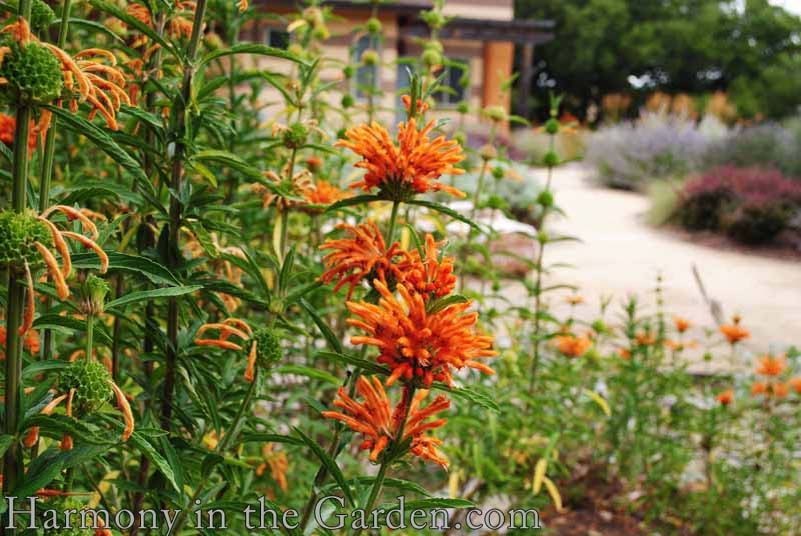
For those of you who garden in hot and thirsty, deer-prone areas, this one’s for you.
Blooming for months at a time and requiring nothing more than a hard pruning once a year, the towering 3-foot spires of blooms will brighten any garden.
The spent flowers are pretty cool, too, and look beautiful gathered in a vase.
7. Gopher Spurge (euphorbia griffithii ‘Fireglow’ )
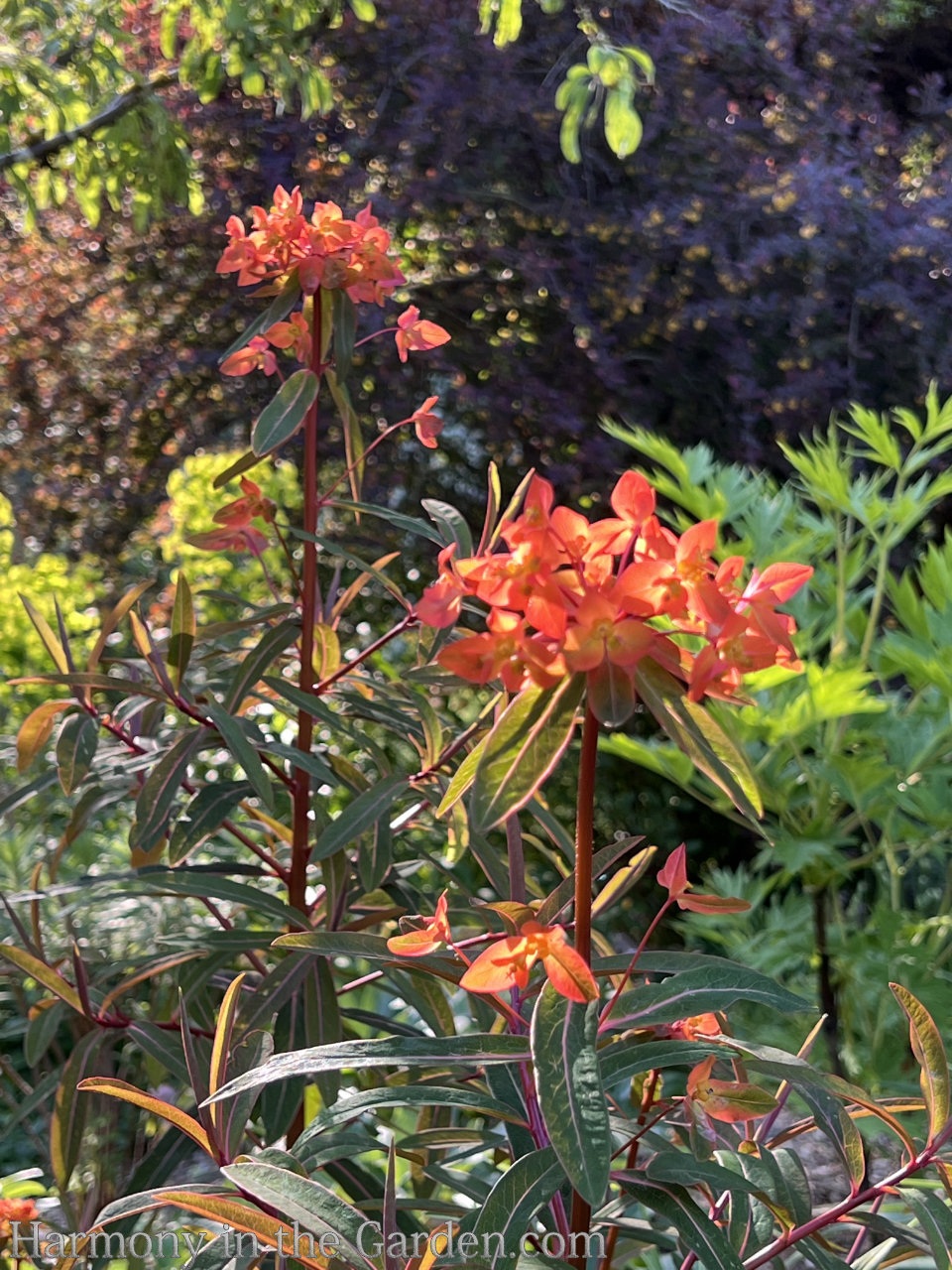
As some of you may know by know, euphorbias are one of the stalwarts of my gardens (read more here).
Other varieties of euphorbias can sometimes be short-lived, but not ‘Fireglow’. I’ve had one thrive in my client’s garden for over eight years now (and counting.)
As the common name implies, the roots of the plant repel gophers (hooray!) but the trade-off is that the white sap that flows in the roots and stems can cause blisters on some people, so be warned!
Personally, I’ve never had an issue with it, but I’ve heard others haven’t been so lucky.
8. Red Hot Pokers (kniphofia uvarias)
Of course, I can’t forget to include one of my favorite plants – the Red Hot Poker (which isn’t always red).
I’ve written more about them here, but suffice it to say that their torch-like blooms come in a whole range of colors (and sizes) besides red or orange.
These unusual groups of ‘exclamation marks’ will certainly add some excitement to your sunny garden bed.
9. Bulbine frutescens ‘Hallmark’
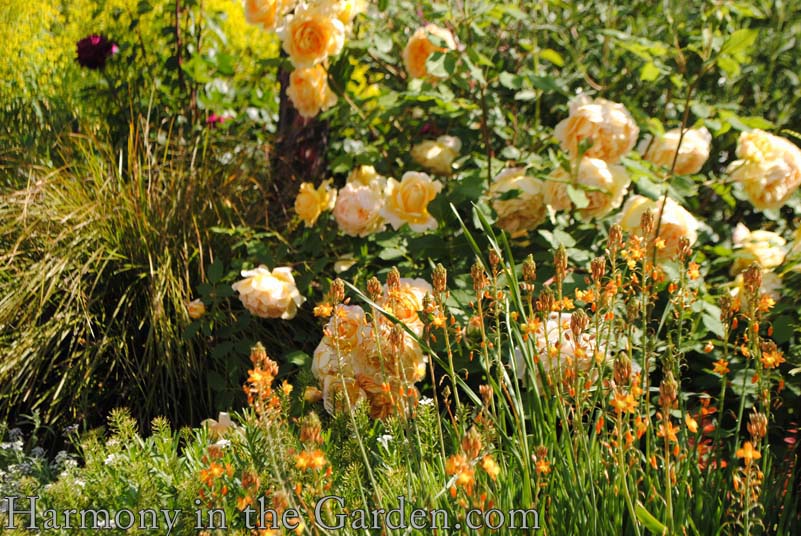
Okay, ready for my bulbine pitch? Here goes: it’s evergreen, has beautiful lush green leaves, blooms off and on throughout the entire year, can grow in the full blazing sun or partial shade, and is deer-proof. Oh, and if it outgrows its space in a few years, you can easily snap a clump off to transplant to another part of your garden.
This variety has soft shades of orange, similar to a Creamsicle (remember those?) but there’s also a lovely yellow version, as well.
And even though it’s a succulent, it’s right at home in a more traditional English-style garden bed. See how happy it is planted at the front of this border? It’s a natural companion to roses (that’s a ‘Golden Celebration’ behind it).
10. Geum ‘Totally Tangerine’
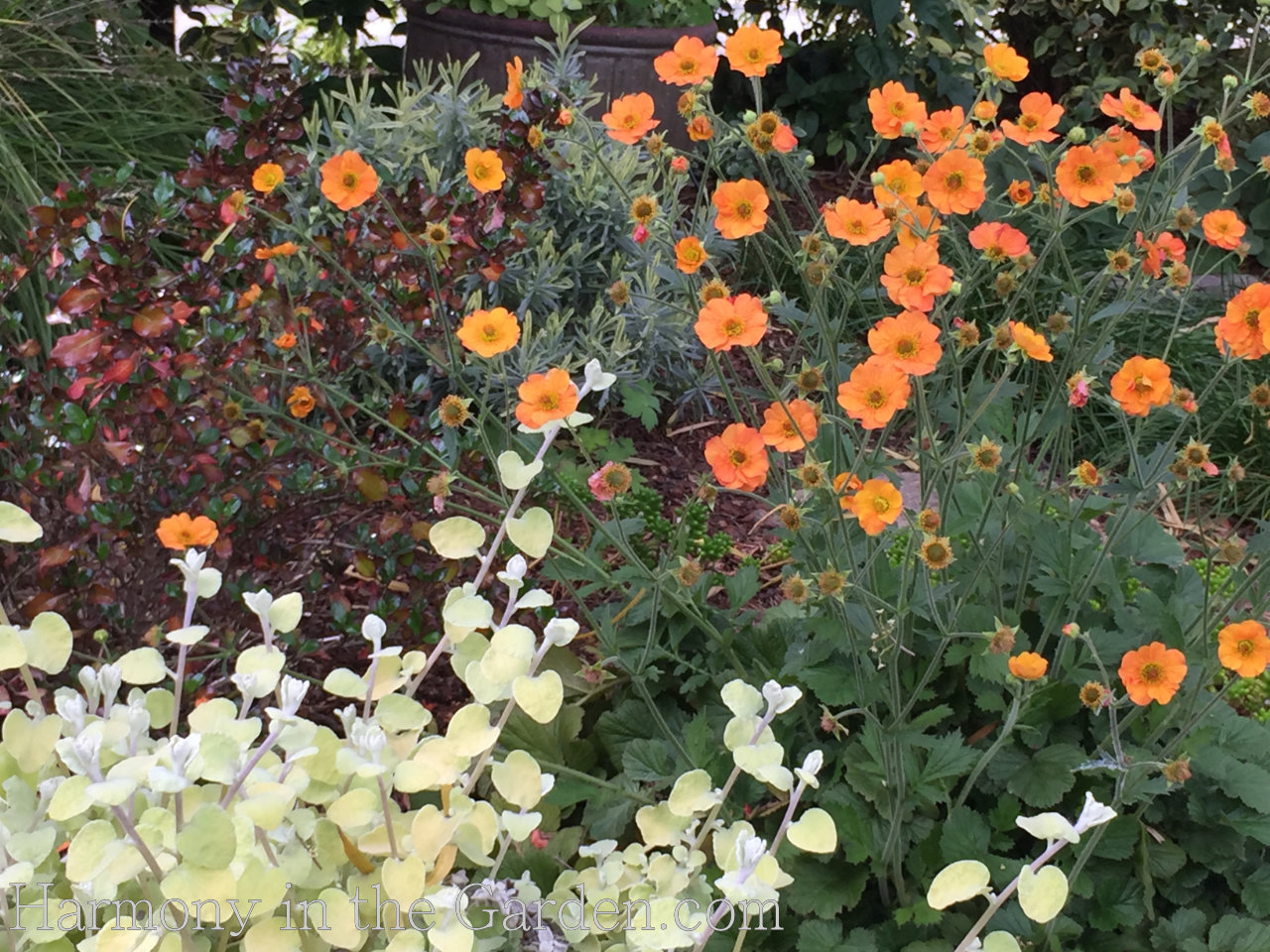
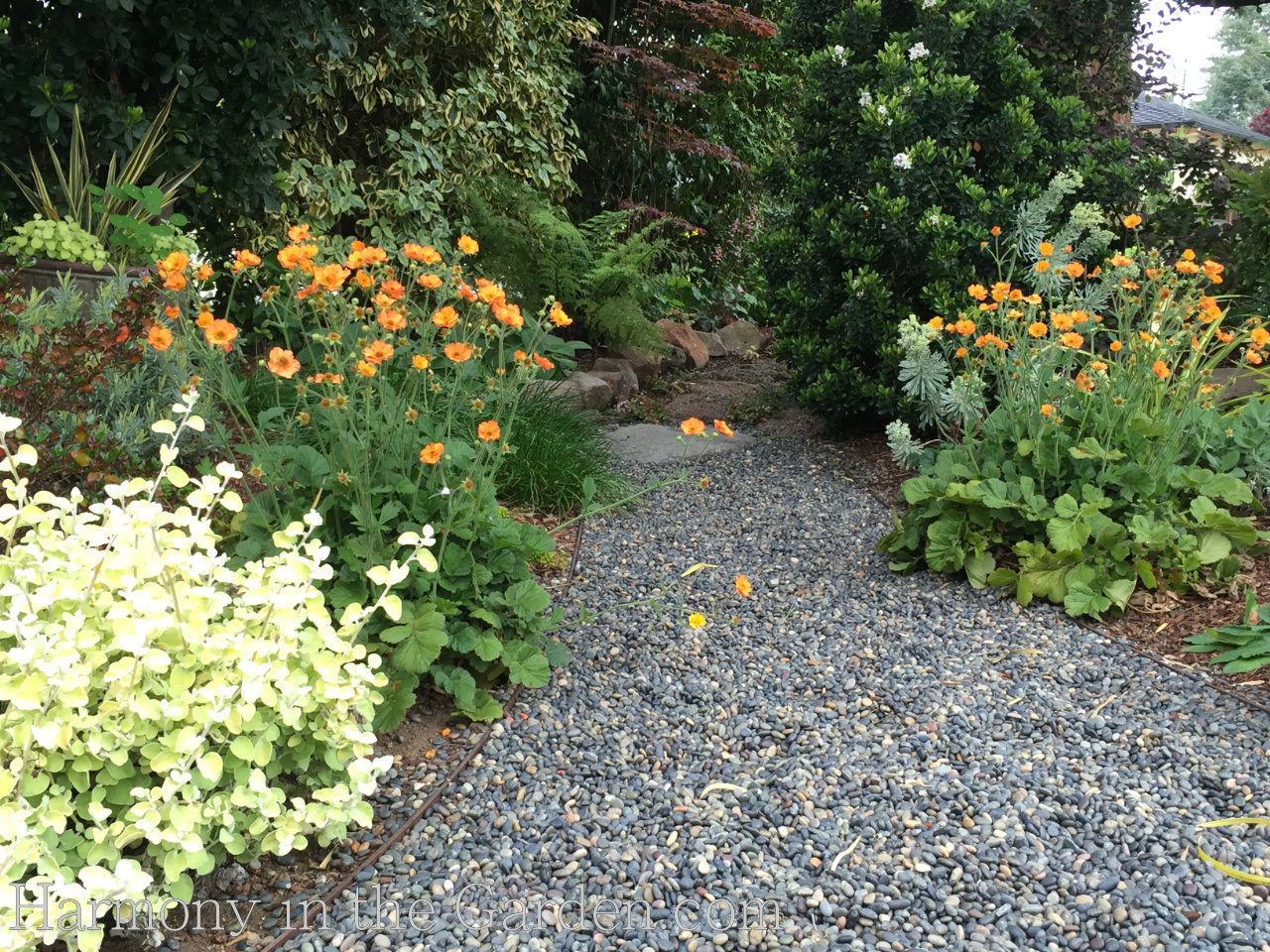
If you’re looking for a softer shade of orange, I highly recommend geum ‘Totally Tangerine’. I adore the way the lush clump of green foliage provides a sturdy base for the profuse wands of soft orange flowers. Lasting for several weeks, the flowers dance above their neighbors, lighting up the flower bed. The foliage is tidy throughout the year, only needing a little clean-up at the end of winter.
11. Berberis ‘Orange Rocket’ & ‘Golden Ruby’ (Barberry)
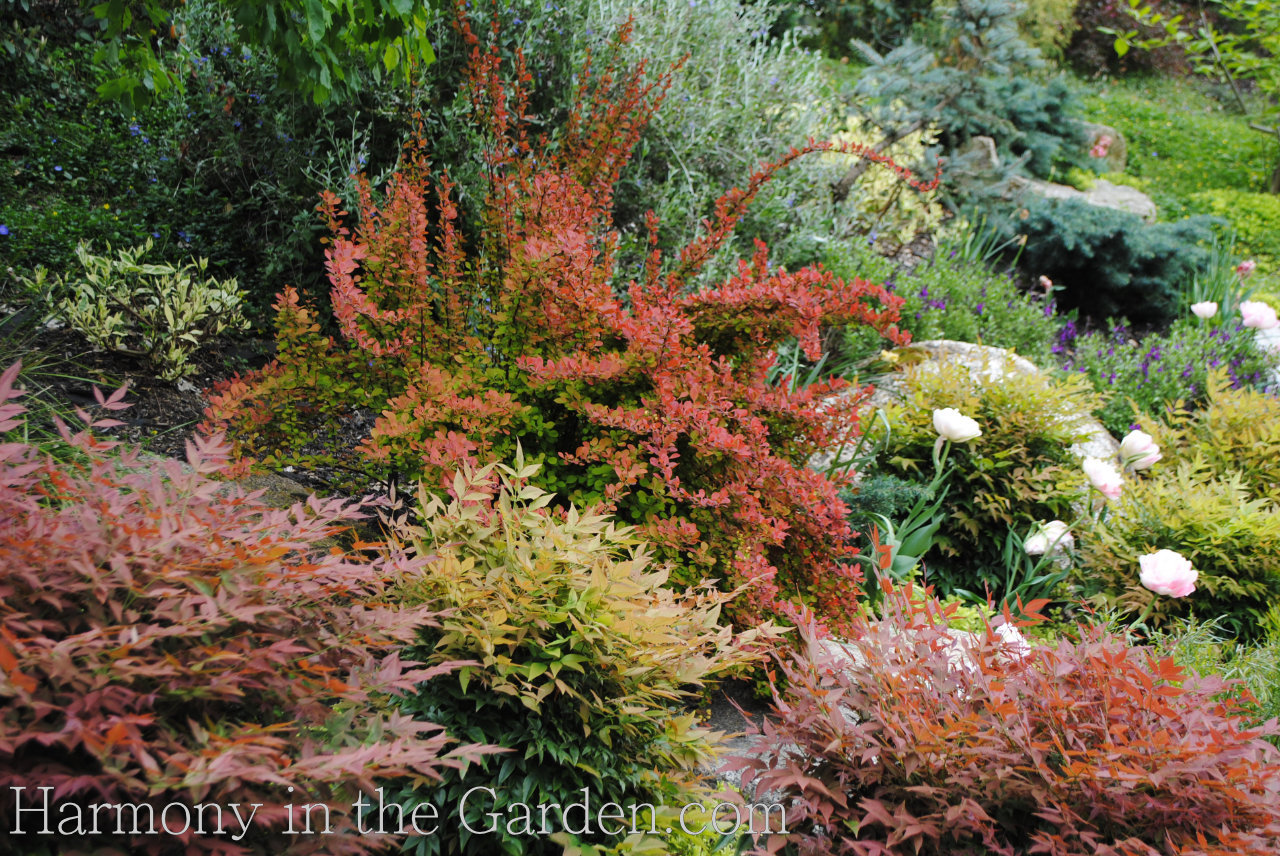
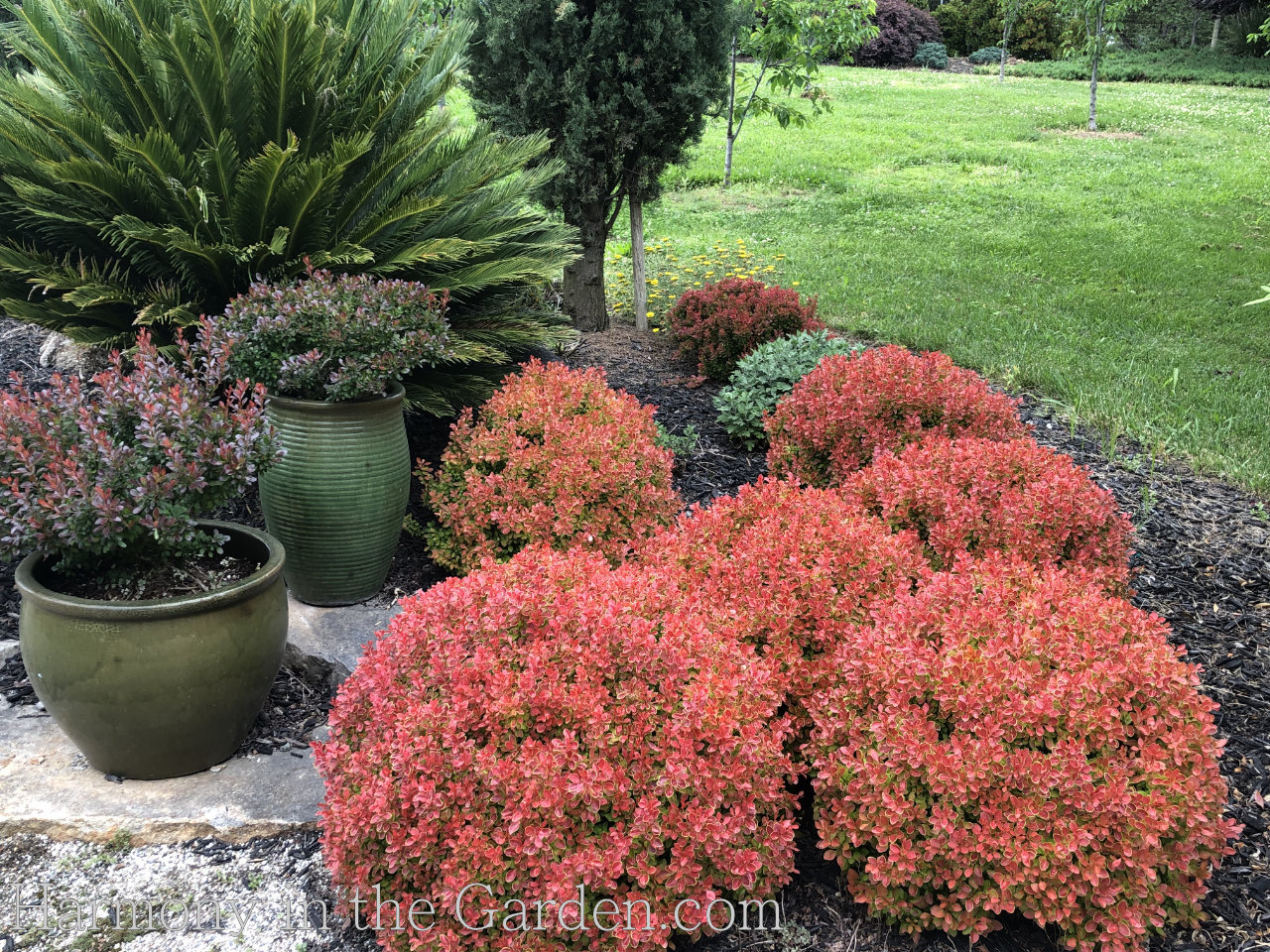
Two different barberries with similar colors but very different growth habits. Both produce very little (if any) seeds, so they’re not invasive in our area, and both have unbelievable shades of rusty to bright orange (depending on the temps outside).
Berberis ‘Orange Rocket’ grows more upright, to about 4′, with the occasional sprawling stems (the photo on the left), while ‘Golden Ruby’ is a tidy little round mound, maxing out around 2’x2′. I love them both equally and use them whenever I want to keep deer out (they hate the barberry’s thorns) while providing gorgeous shades of orange.
12. Helianthemum ‘Henfield Brilliant’ (Sun Roses)
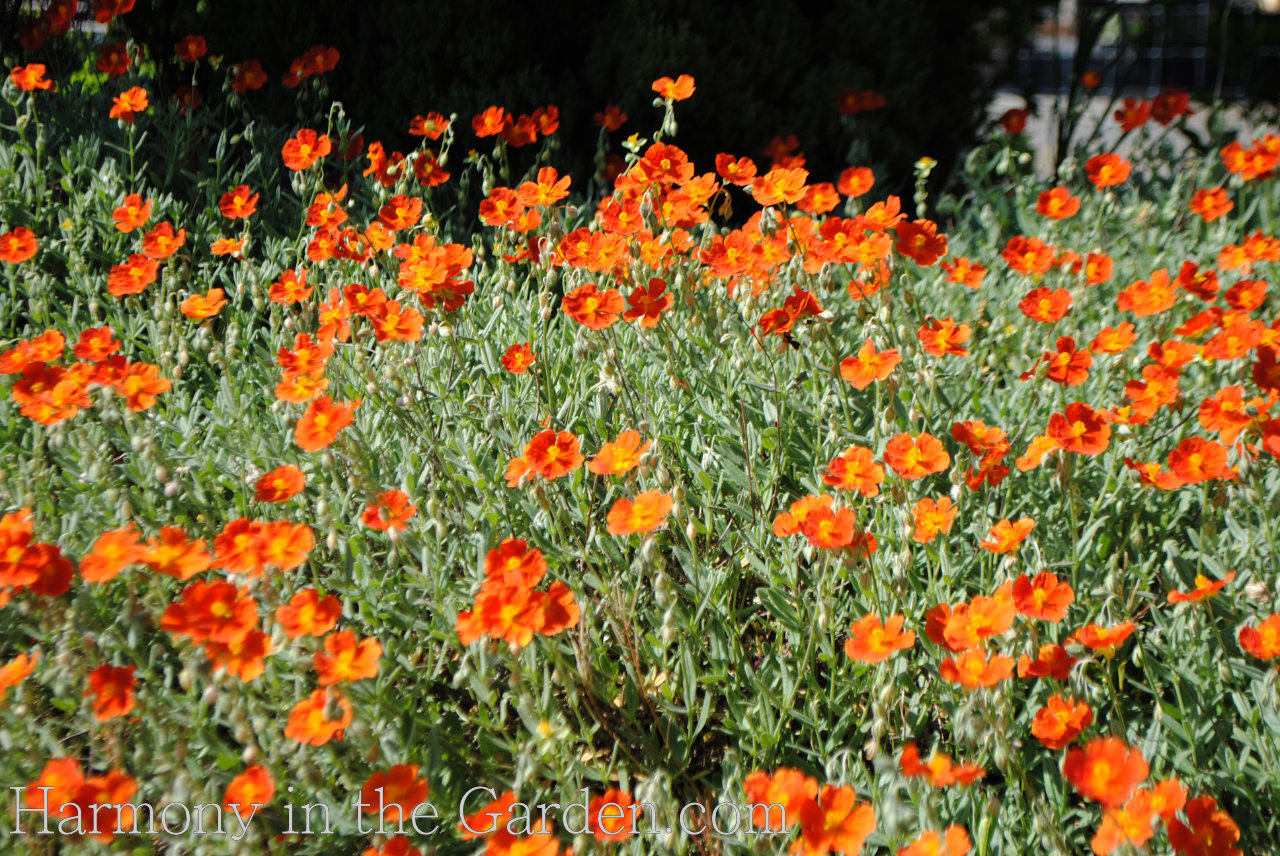
The soft gray-green foliage of this Sun Rose is the perfect background for the delicate and cheery orange flowers that cover this plant.
Growing in full sun, with very little water, this plant will slowly sprawl to 3′ or so, while remaining under 1′ high. It’s the perfect addition to the front of the border in a sunny rock garden.
13. California poppies (Eschscholzia californica)
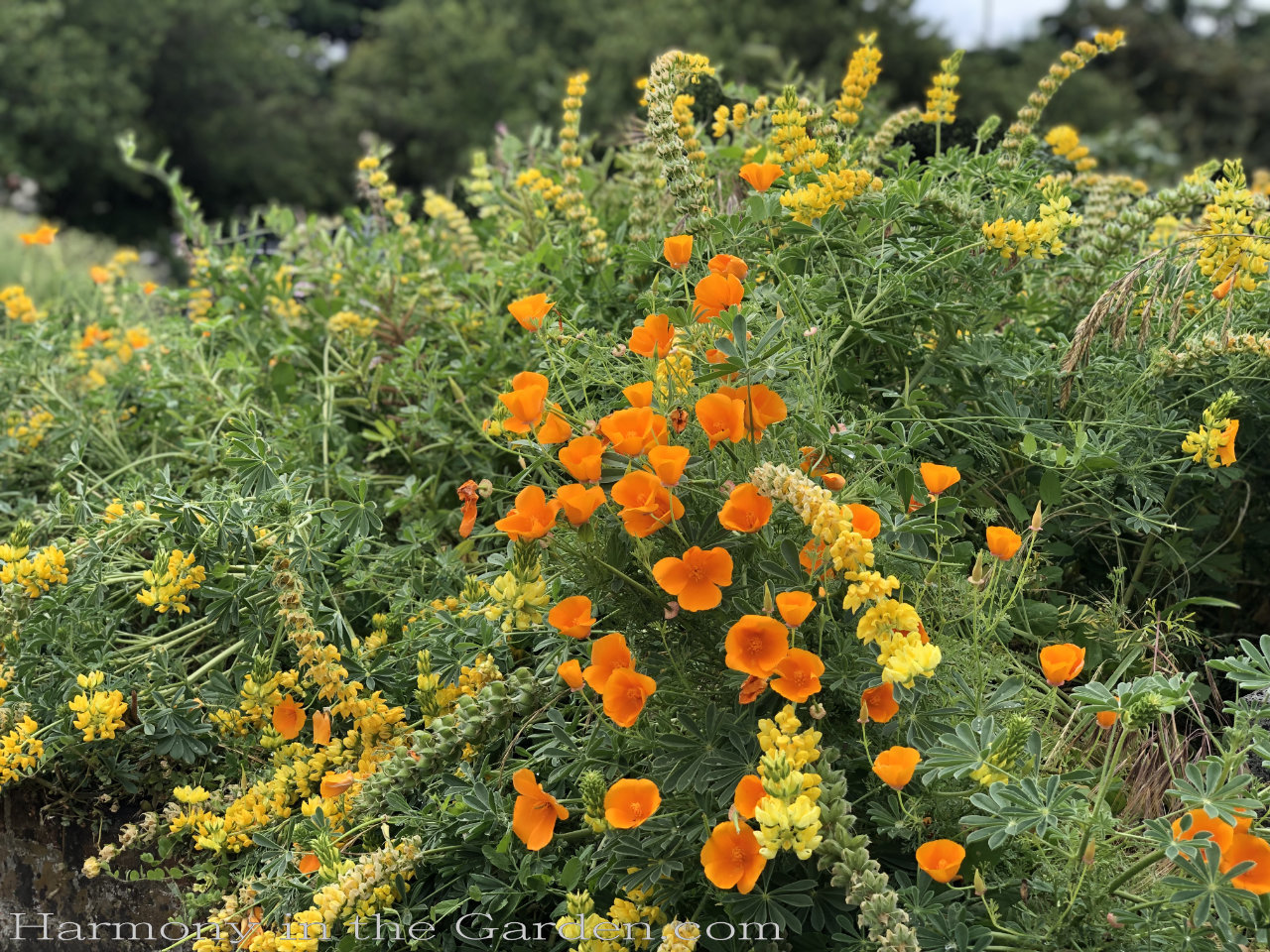 Of course, I have to include my native state’s flower, the California poppy!
Of course, I have to include my native state’s flower, the California poppy!
While they can sometimes be a little tricky to get started in the garden, once they take hold – look out! You’ll be rewarded with scads of these harbingers of spring year after year.
I’ve found the best way to grow them is to start from seed, as their roots resent being disturbed. Every time I’ve tried to plant a 6-pack, the little plants died.
Full sun, somewhat decent soil (although I often see them in very gravelly, rocky soil) and a little water, and that’s all they need!
14. Western Columbine (aquilegia formosa)
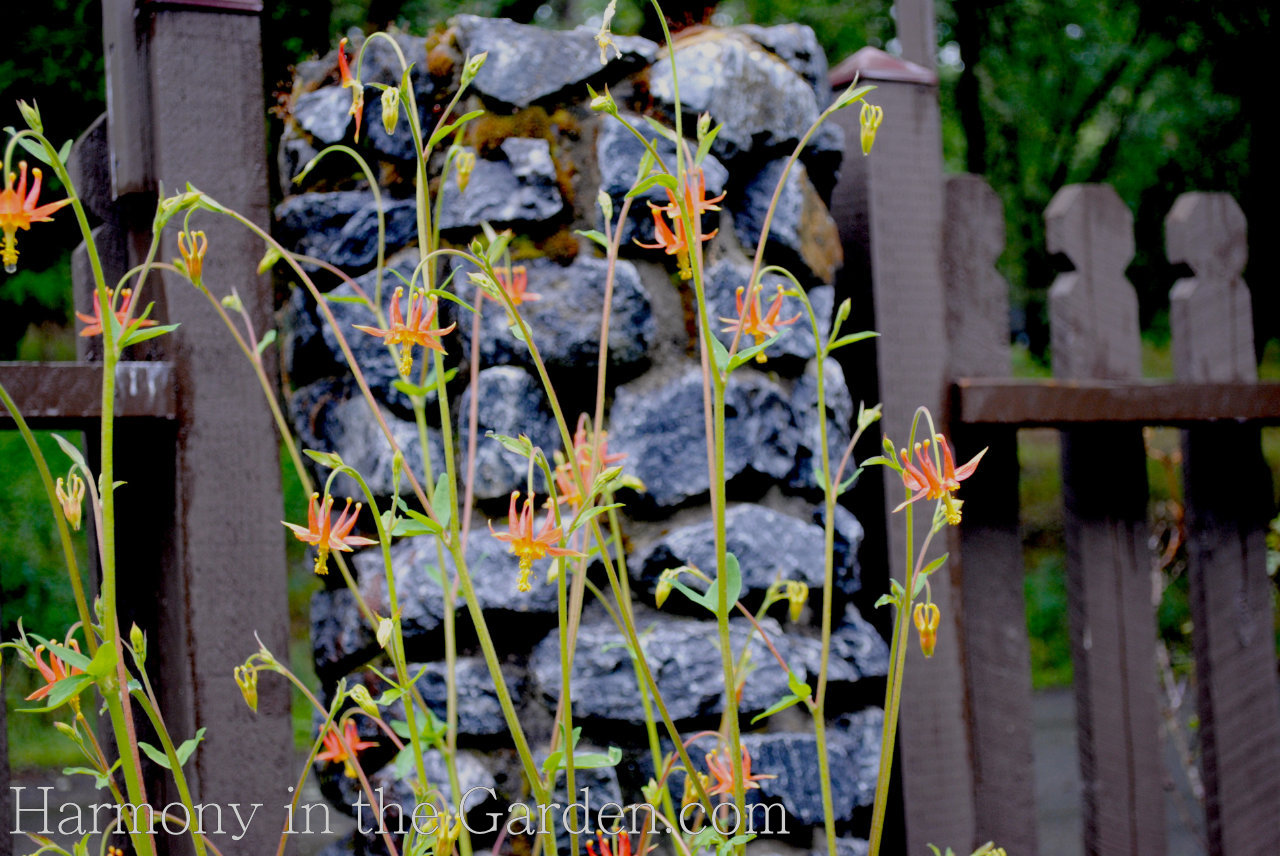 Ever since I can remember, this has been one of my very favorite flowers of all. (I write about what the columbine flowers meant to me as a young child here).
Ever since I can remember, this has been one of my very favorite flowers of all. (I write about what the columbine flowers meant to me as a young child here).
And while columbines come in just about every color under the sun, it’s the little orange and yellow fairy-flowers of the Western (or Alpine) columbine that steals my heart.
A single plant will eventually produce little seedlings that you can easily transplant throughout your garden, creating a woodland-like feel.
14. Alpine lily (lilium parvum) and the next best thing for hot & dry climates
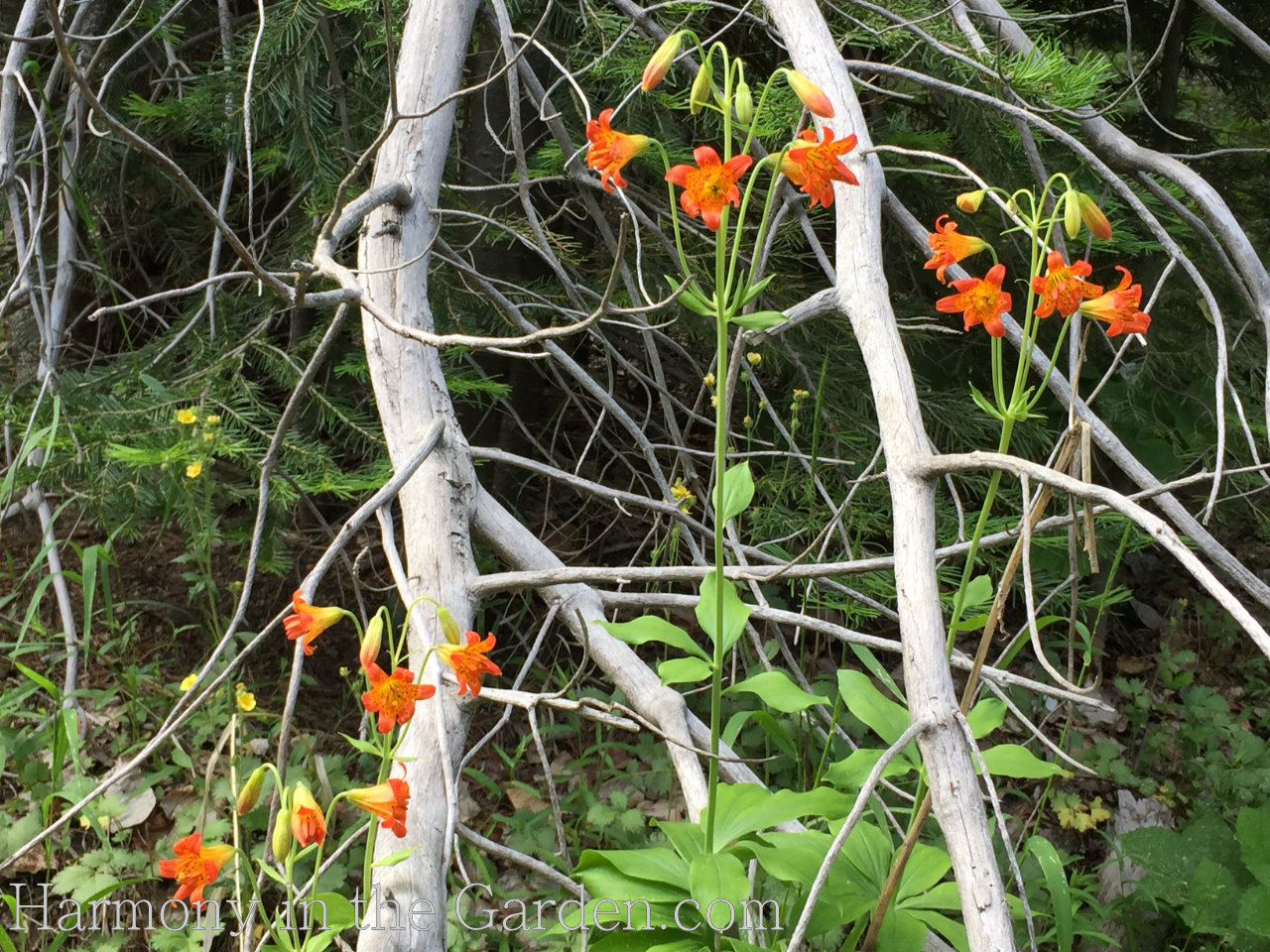
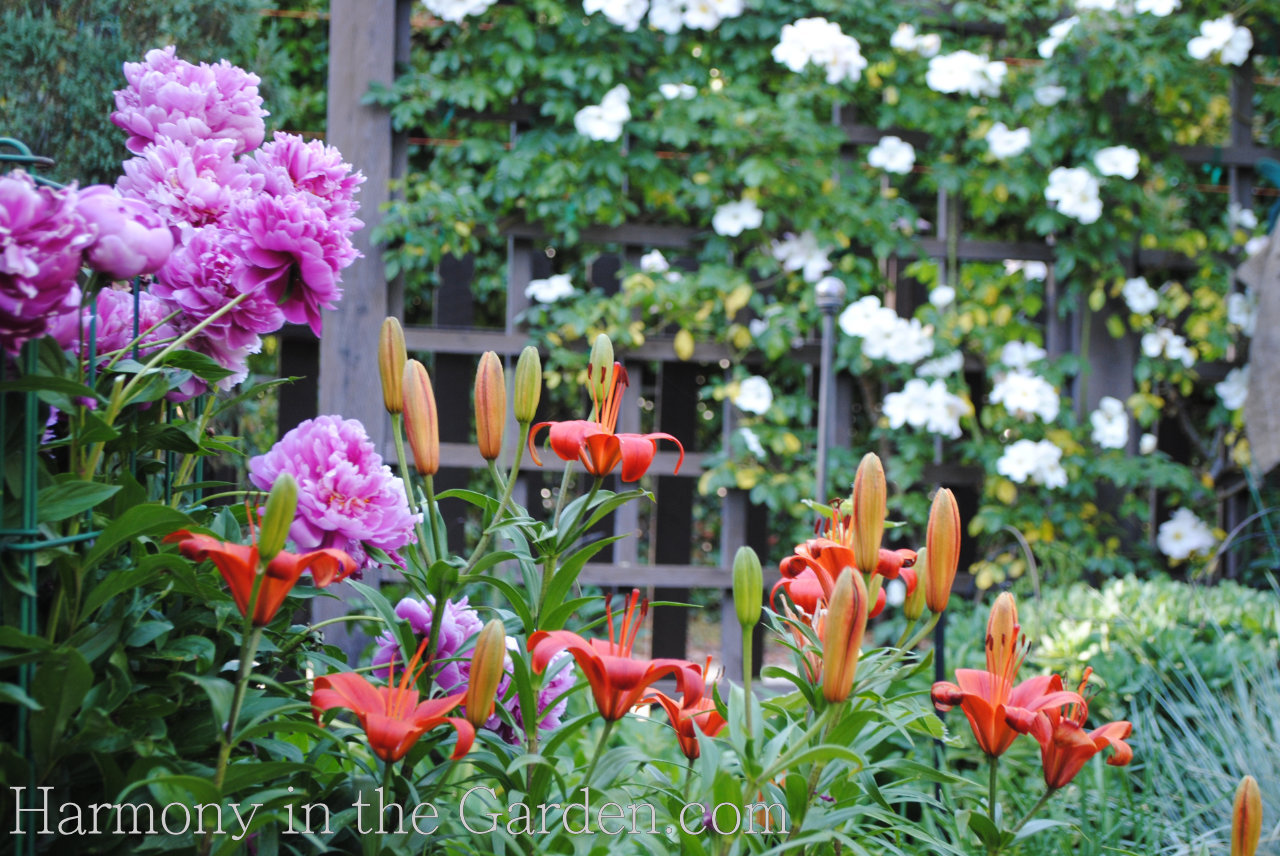
While hiking in the Sierras hunting for wildflowers, I never tire of coming upon a stand of Alpine lilies (photo on the left).
Even though they’re easy enough to start from seed (assuming you have plenty of water nearby), they always seem somewhat exotic to me. I guess it’s because I’ve never been able to grow them where I live as it’s waaaay too hot and dry.
But I DO grow these dark orange Asiatic lilies (on the right). I don’t know the variety, as they originally came from my aunt, who didn’t like the color. She then passed them along to my mother, who also hated them (in particular planted next to her peonies).
Personally, I happen to love this combo. Yes, I know that if I were to put on an outfit of dark pink and deep orange, I’d probably get some mighty strange looks. But in my eyes, this planting combination looks fantastic. But I still couldn’t convince my mother. So, I posted this photo on Facebook a while back, curious if people agreed with my mom about the awful color-combo, or if they agreed with me. I’d say it was about 50:50.
Anyway, I ended up getting the lilies, and I love them!
15. Succulents!

And finally, I couldn’t forget the zillions of succulents that have fantastic blooms in all shades of orange.
Lots of people plant them in their gardens for their fantastic texture or structure, but don’t forget – they bloom, too!
These are just a few of my favorites.
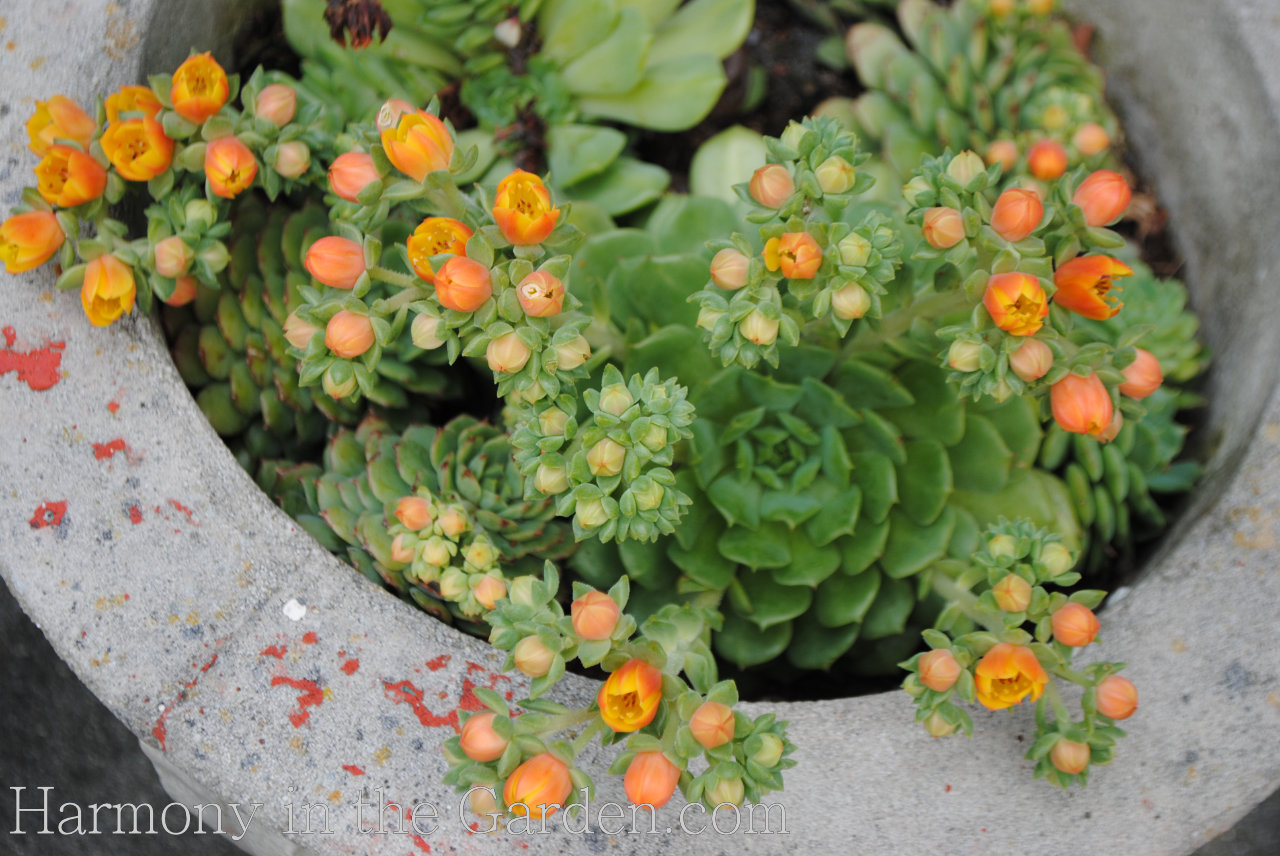
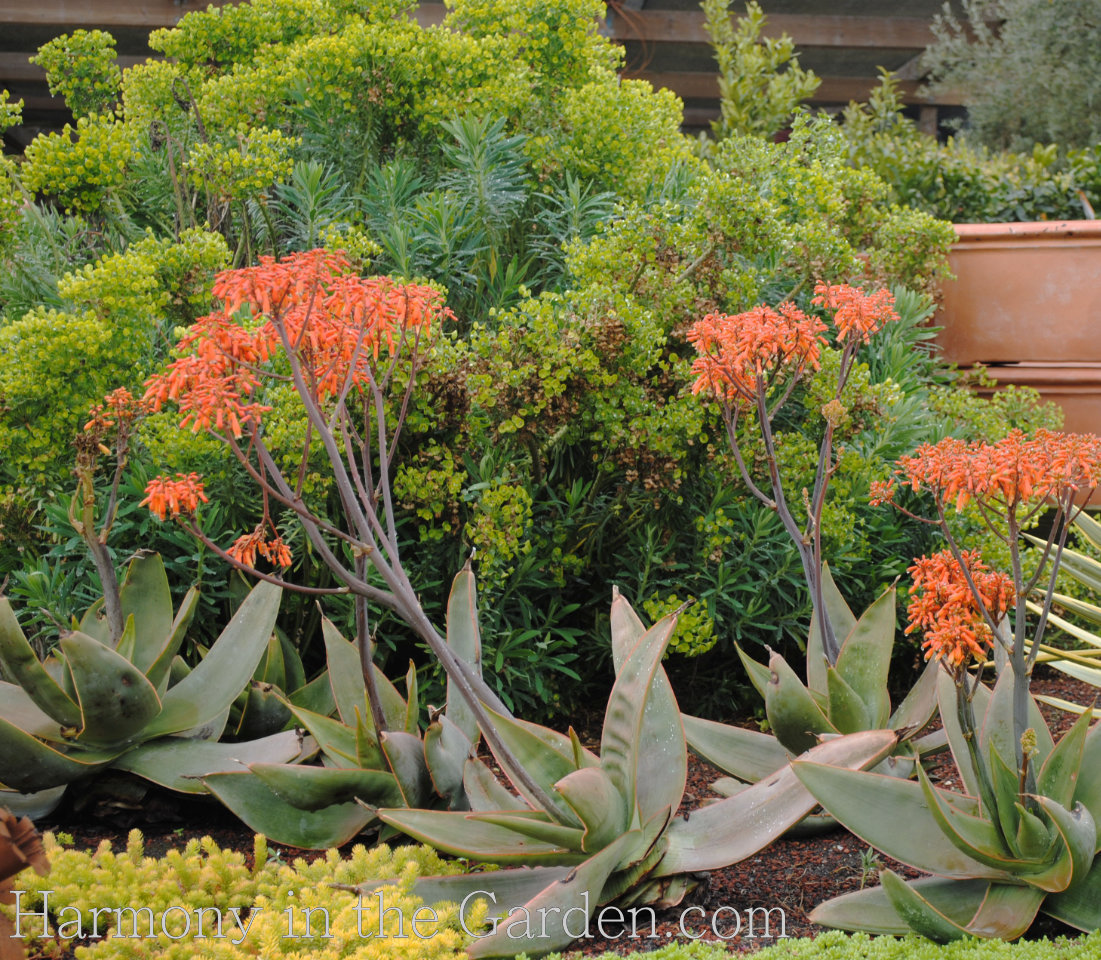
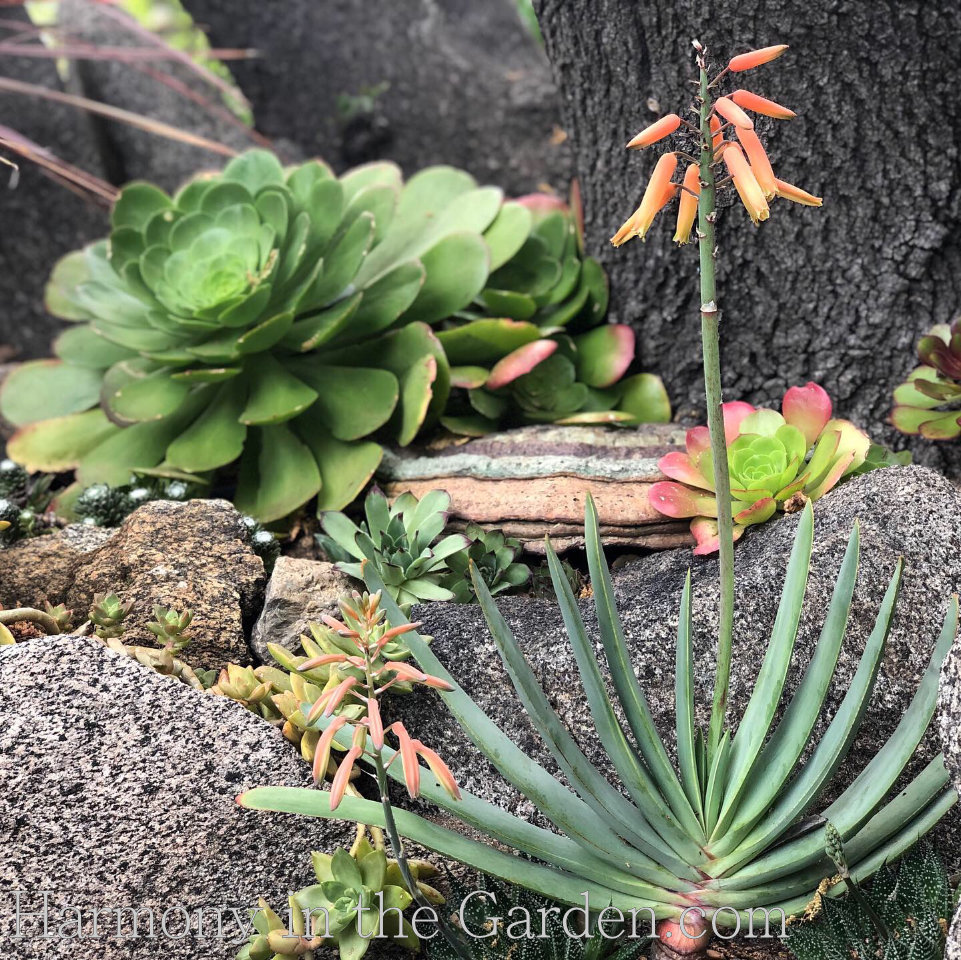
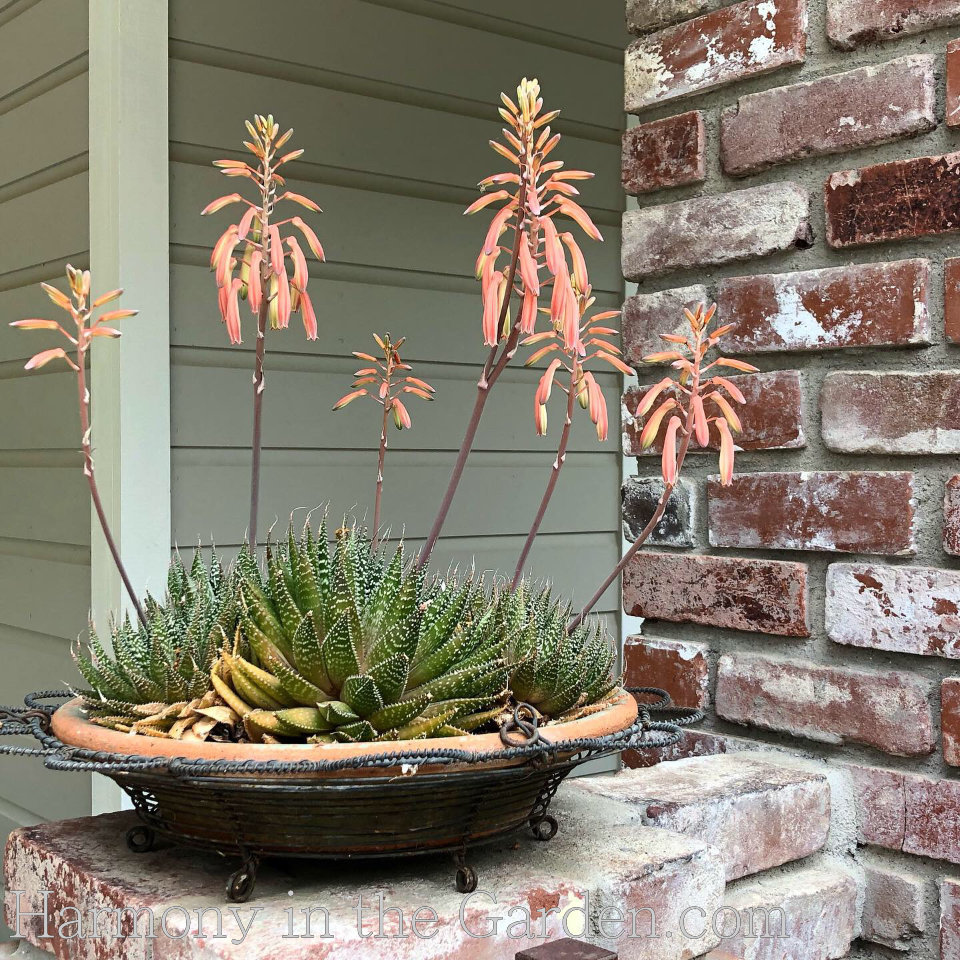
16. Tithonia rotundifolia ‘Goldfinger’ (I couldn’t help adding one more!
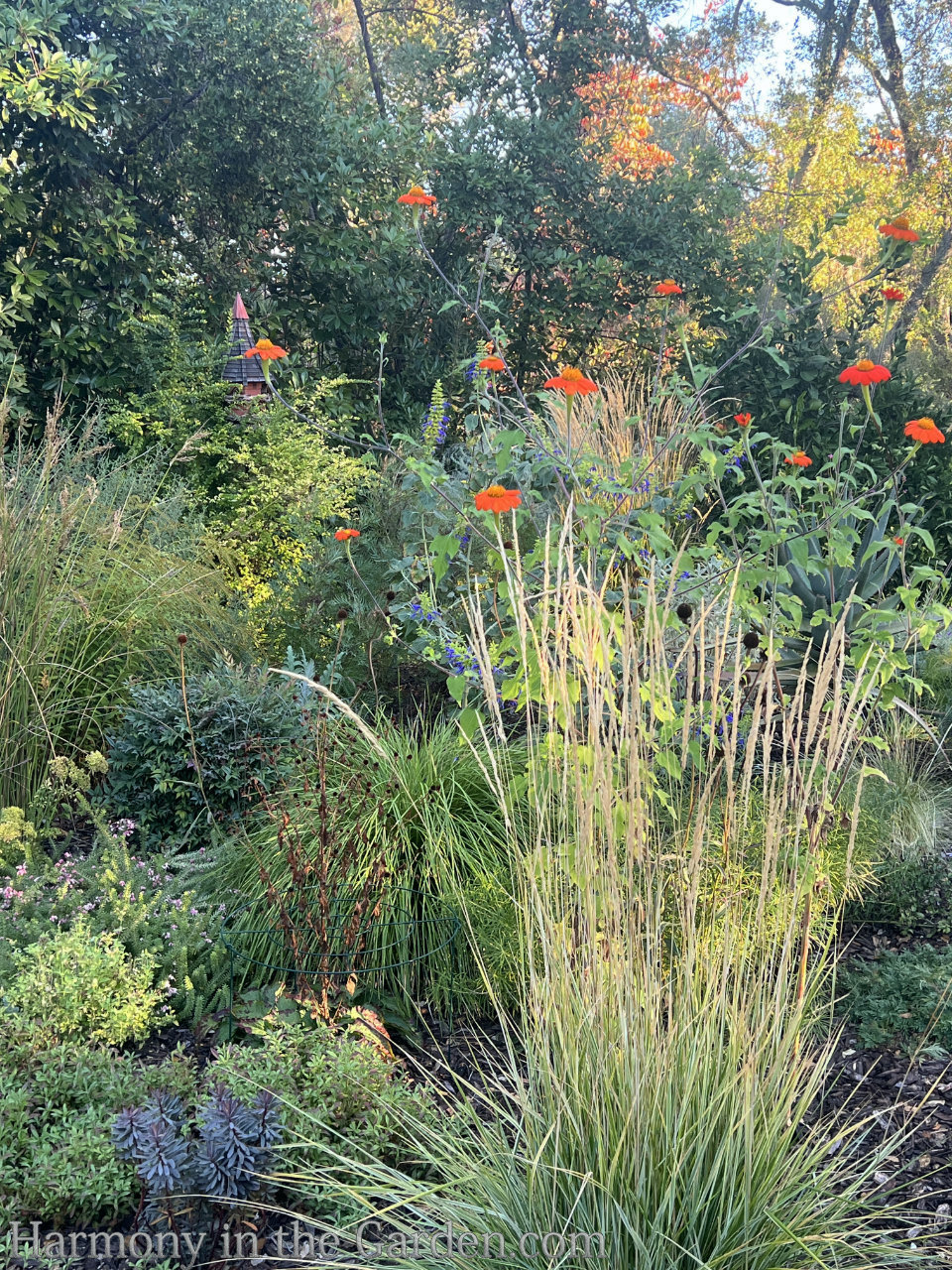
I just had to add one more favorite to this list of orange plants – tithonia (aka: Mexican Sunflower)
I’ve only recently started planting this in my garden and it’s quickly become one of my favorites.
Tithonia begins blooming late summer, when not much is happening in the hot and tired garden.
While there certainly are plants that do well at this time of year (click here to see my list of late-summer bloomers) the oversized, bright orange flowers are my favorite.
I absolutely adore anything that’s oversized and towering (want proof? Click here!)
Tithonia doesn’t disappoint, growing to 8-feet or more in a single season!
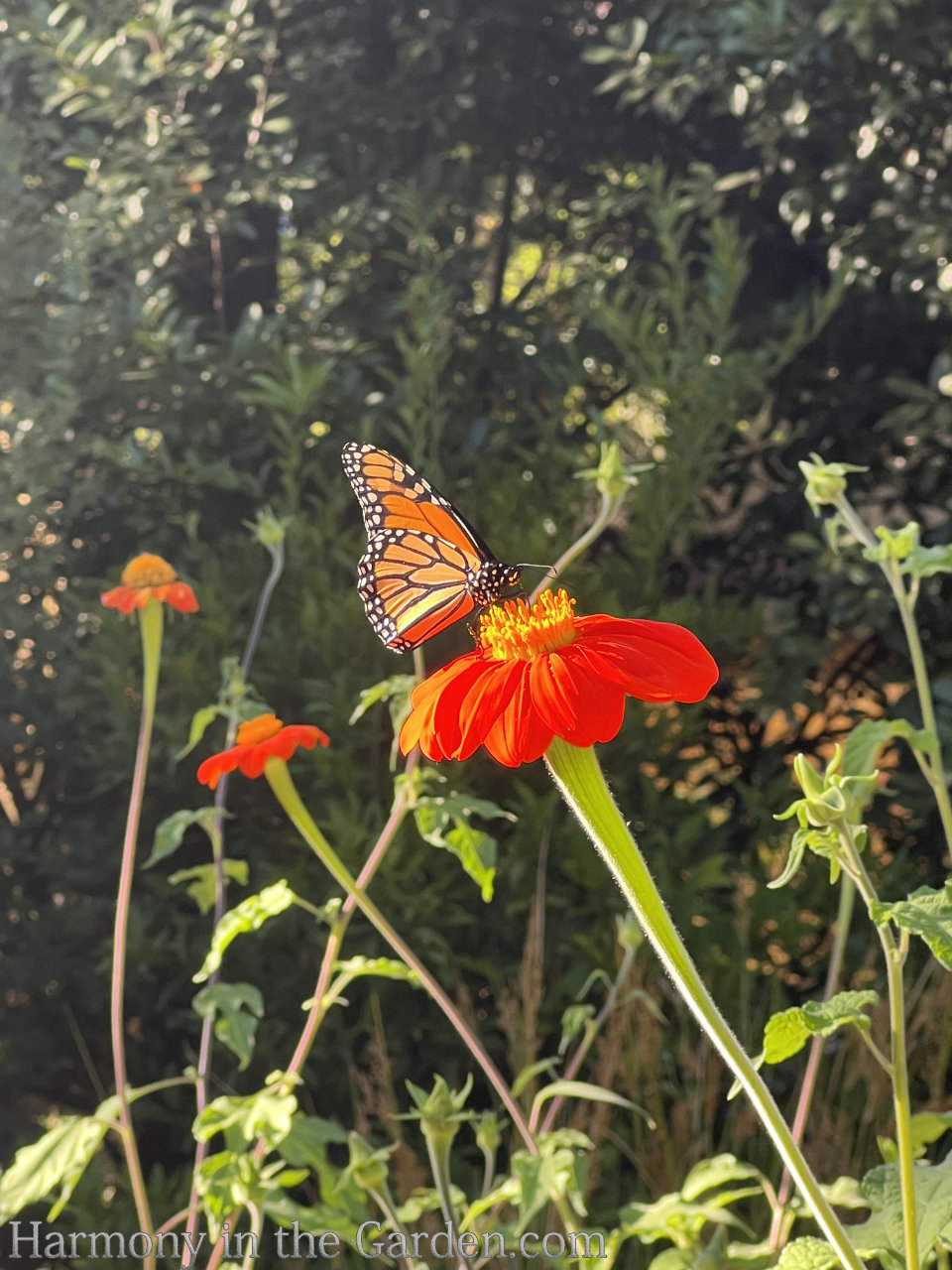
Tithonia flowers are also deer-resistant, which is always a plus in my garden which is regularly visited by hungry deer.
And finally, pollinators love the flowers almost as much as I do, so it’s a natural to add to my pollinator garden.
17. Sparaxis elegans (Harlequin Flower)
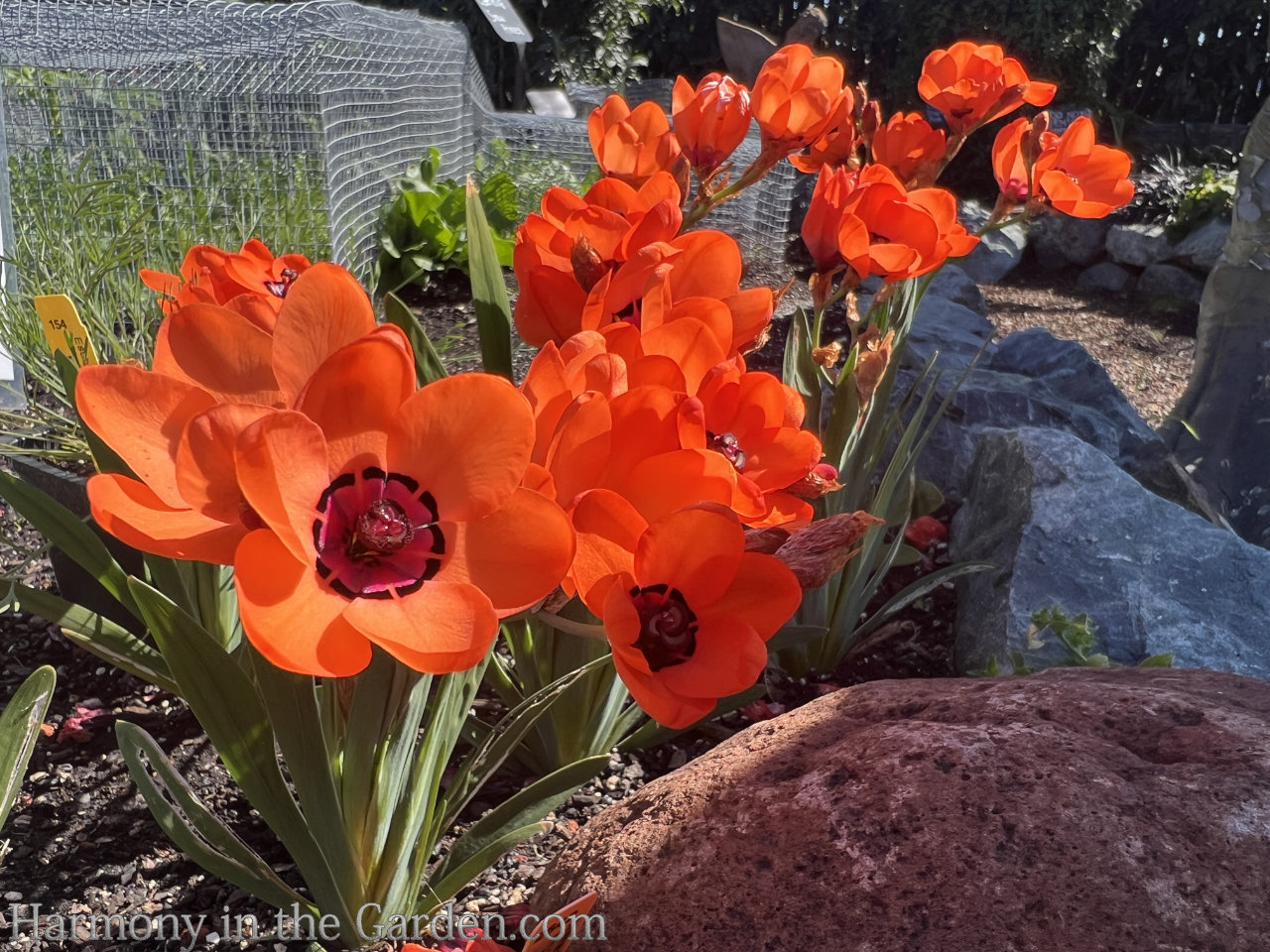
Oh gosh, I just can’t stop! Okay – this is the last one, I promise!
This little 6-inch high bulb is the brightest orange you’ll ever see. It emerges from the ground in early March and is the perfect way to welcome Spring!
When happy, it’ll self-seed throughout garden garden, causing it to sparkle on an overcast rainy day.
If you’d like to read more about other warm-climate bulbs, click here.
But wait! There’s more!
My daughter was recently married at Lake Tahoe. I’ve yet to post about this and how we scrambled to re-do our garden to accommodate this monumental event, but since we’re on the topic of orange flowers, I just had to include these photos.
My love of orange flowers has clearly rubbed off on her as shown here in the fabulous marigold arch. She had this vision in her mind for several years and found the perfect florist to help bring her vision to life. t’s absolutely glorious!!!
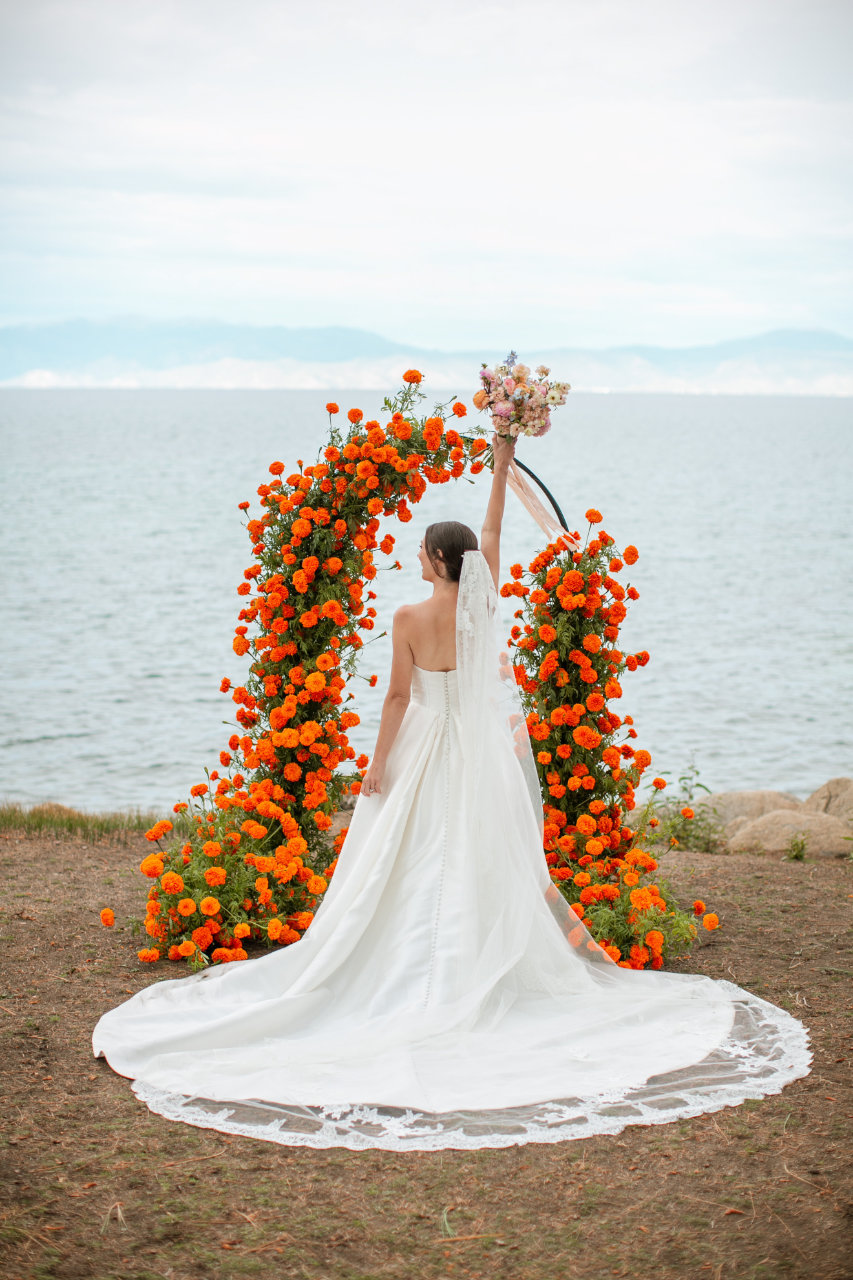
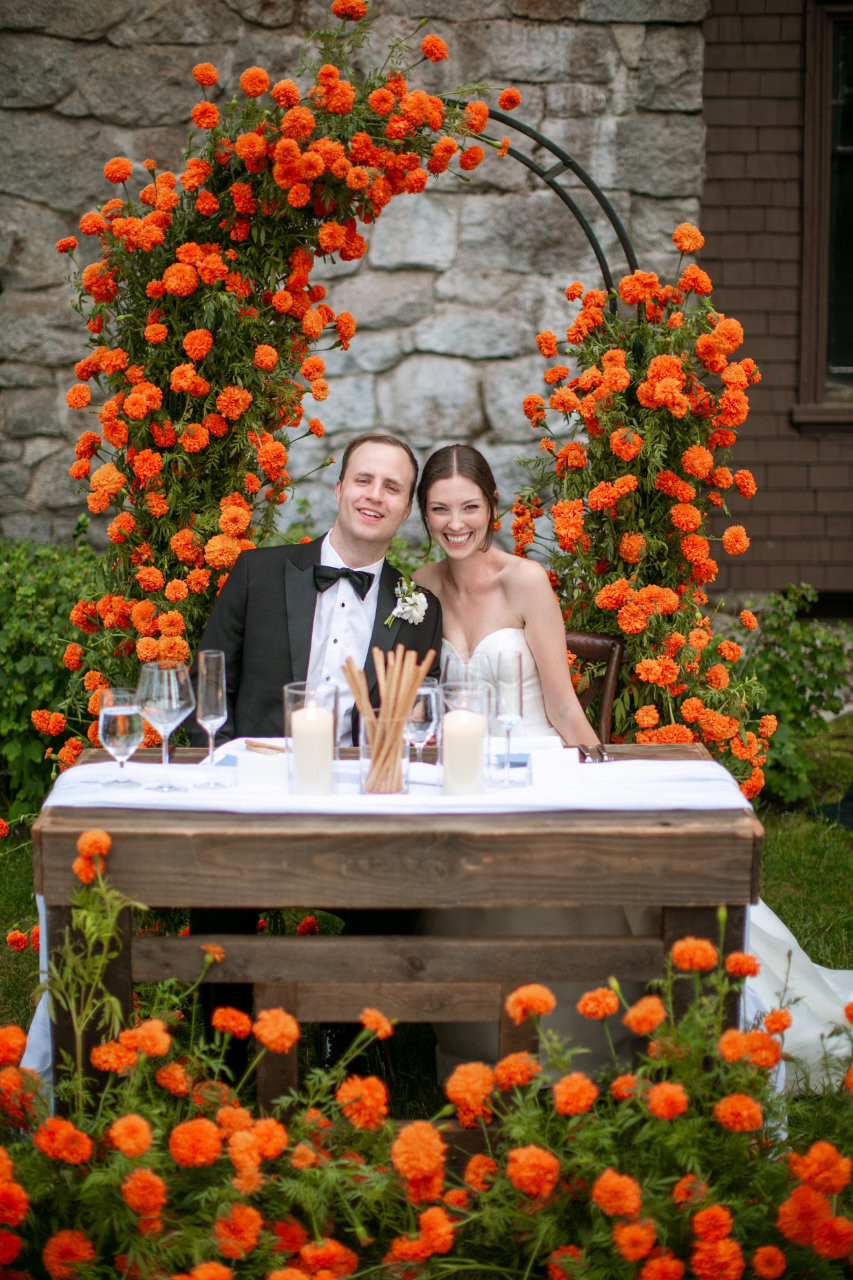
So there you have it, my list of favorite orange flowers for the garden! What are your thoughts on the color orange in your garden? Love it or hate it?

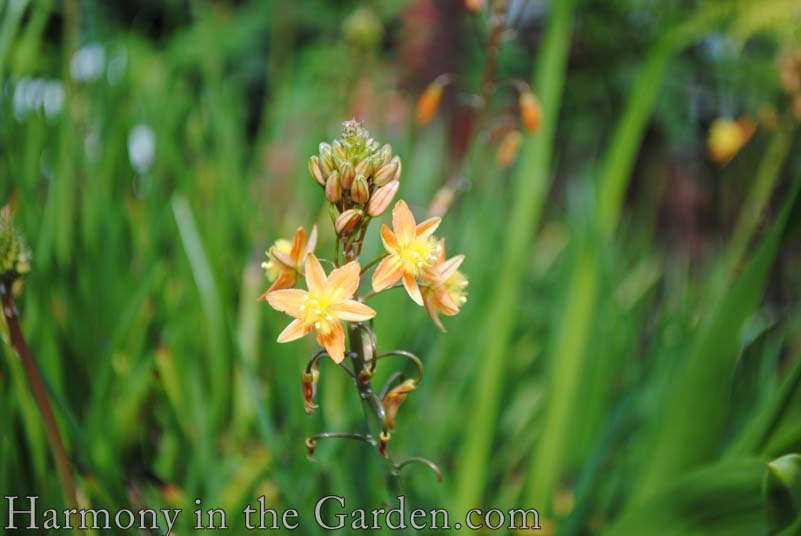
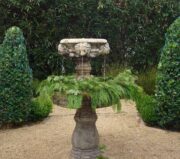


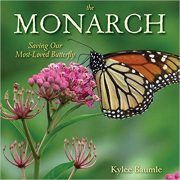
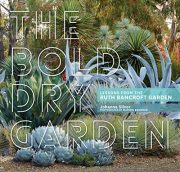

27 Comments
I love orange flowers – so bright and cheerful but they blend so well with other plants. I’m trying to aim for the 70/30 native/exotic mix so love the orange against some of the subtle colours of native flowers. My particular faves right now are Asclepias tuberosa (milkweed) and Ipomopsis rubra (probably more red than orange but may be debatable). I. rubra is not really native to here (Canada, 64 miles north west of Buffalo NY). I also love non-native orange lily flowered tulips; and not to forget about Dahlia ‘Bishop’s Children’ who often have orange flowers, as well as Dahlia ‘K-K-K Katie’.
I loved the picture of your daughter and new hubby sitting beneath the marigold arch.
Hi Isabel, nice to meet a fellow ‘orange flower lover’! I wanted to thank you for your Ipomopsis rubra suggestion as I’ve never seen it here in Northern California. After googling it, it seems it would do well here so I’m now on the hunt for some seeds. Your description of the asclepias and ipomopsis sounds lovely! Thanks for stopping by (and glad you enjoyed my daughter’s marigold arch photo!)
I love the orange of ligularia (leopard plant?) in late summer. Oranges are so eye catching with blue flowers and even the blue of the sky on a clear day!
I agree, Joyce, orange and blue colors have so much visual energy and add so much to the garden. The blue sky included!
I love orange flowers! I’ve got my eye on that ‘Totally Tangerine’ geum! I love yours with that really light-colored foliage plant next to it. What is that, and is there any chance it could survive a zone 4 winter? Do you have any other combo ideas for that geum?
Tiger Lilies came with my house when I bought it. They are one of my absolute favorites. I’ve been adding more around the property. I like them mixed with the Hollyhocks (also came with the house) but, I have added some Russian Sage in one area to see how that combo might work. I also like my Tiger Lilies mixed with pink flowers.
Hi Gayle, you should definitely try ‘Totally Tangerine’ – in fact, it’s really the only orange geum that I’ve found to reliably return year after year (many others that look like this variety don’t perform as well) Unfortunately the helichrysum (licorice plant) next to it won’t survive in your zone 4, it’s only hardy to zone 8 (but you could always plant it as an annual!) However, anything else that has gray foliage would look fantastic with it – maybe lambs ears (I particularly like the ‘Primrose Heron’ variety as it has a slight tint of cream to its foliage) or Artemisia’Silver Mound'(a lovely small, mounding variety.) Since the geum likes a little shade, you could even try it near a Japanese Painted Fern (Athyrium niponicum var. pictum), I’d be curious to see how that looks! Lucky you to have tiger lilies, I absolutely love those!
I saw this growing yesterday in the Cottage Garden at New England Botanic Garden, Tower Hill, Boylston, MA! They have a greenhouse so must have started bulbs indoors and set out later. It was quite lovely fronting the new Cercis canadensis ‘Flamethrower’ with its changing fall color, intermingled with Euphorbia ‘Bonfire.’
Hi Priscilla, don’t you just love the ‘Flamethrower’? It’s on my list to hunt down this fall and add to my garden. The combo you saw at the botanic garden sounds absolutely lovely, the epitome of fall colors!
I too have had trouble convincing my friends about the wonders of orange. A lot of my gardens are a bit away from the house and when the orange flowers appear your eye goes right to them (unlike a beautiful lavender). In the late winter and early spring (in Massachusetts) I crave color and the oranges do it for me. I’m saving your list so I don’t forget those I don’t have yet! Viva l’orange!
Hi Carolyn, you’re so right about the color popping from a distance. As I write this, I’m looking at my tithonias which are across the garden and look like towering beacons of light in the early morning. Viva l’orange, to you too! 🙂
I used to truly hate orange. My aunt ruined it for me when she painted her entire upright piano a screaming shade, every single thing orange except the keys. At the time I couldn’t appreciate how bold that was, haha.
It only took about 40 years, and I don’t know exactly when it happened– but now I love orange! I will not be painting my piano though.
Oh my gosh – her entire piano? She sounds like she was/is a woman with very strong and distinctive tastes, not afraid to go against the grain. I’m so glad you’re an orange-lover now and I bet she’d be proud of you! 😉
Hi Rebecca… Speaking of orange, we are picking persimmons right now so if you will be in our area in the next few weeks and would like to have some please let me know. As always, we have plenty (and more!) to share. Hope we will see you!
How nice to hear from you, Suzanne! I’ll actually be down for a quick visit the late afternoon of the 4th, or early on the 5th. Any chance I could stop by on the 4th to get a few? I’d love to see you!
Yes, come by on the afternoon of the 4th. Park in our driveway and come through the gate there. We will look forward to seeing you. We have another abundant crop this year so plan to take more than a few. Take care for now…
Rebecca, I so enjoyed this post on orange-colored flowers. I thought I was never a fan but I did add to my garden Florida Tropical canna for the leaves. Unfortunately, the iguanas seem to like it too. A friend suggested I purchase an orange Crossandra but never got to love it. I do like my firecracker plant for both the blossoms and foliage. Your choices are so intriguing, however, I am zone 10 so limited.
Hello Joyce, and thanks for your other suggestions. Iguanas? Yes, we’re definitely in different zones – ha! Here,I have the deer, rabbits, gophers, and turkeys to contend with, but no iguanas. The ‘Tropicana’ canna you picked is one of my favorites, great choice!
I really appreciate learning about so many wonderful plants, and can’t wait to research which thrive in my sandy loam soil. Your comments reinforced that I’ve planted pink/ white colors for the public, and yellow/ orange/ whites for personal pleasure behind fences?
Just gorgeous Rebecca! Please come to Bainbridge Island and help me with my garden someday. Miss you.
Most of the oranges for zone 5 seem to be daylilies, butterfly weed, oriental poppies. I love oranges, reds, golds (with deep blues, purples and whites for contrast). What else should I try?
Hi Ann – If you like the trollius flower that I featured, that would also grow in your climate (it likes moisture, as well), as would the columbine (they freely grow at Lake Tahoe where they’re regularly covered with 8′ of winter snow) and the helenium varieties. Other thoughts are: I absolutely love the gold colors of Rudbeckia subtomentosa ‘Henry Eilers’, as well as rudbeckia triloba. If you don’t have the room for a tall ‘Henry Eiler’s, there’s also a smaller one out there called ‘Little Henry’. Have you tried the peachy-orange tones of various heucheras (like the ‘Peach Flambe’) or heuchera ‘Forever Red’, or another favorite of mine, the peony ‘Felix Supreme’? I also love the lemony-yellow flowers of the solidago ‘Little Lemon’ which also happily grows at Lake Tahoe, reliably returning year after year. I hope I’ve given you a few ideas!!!
This is a great plant list and I can see that next year I need to do some orange plant hunting. I’ve had it in past gardens and it really brings things to life and lowers the sweetness factor of other plantings.
Thanks, Barbara. I love your phrase ‘lowers the sweetness factor’. 😉
Love the article and plant list! Personally I haven’t run into so many clients who hate orange, but I believe it. I also really like to use Libertia peregrinans for orange in the garden (when I can find it).
Hi Nicole – I can almost guarantee that when I ask what colors people don’t want in their garden it’ll either be ‘I like them all’, ‘no orange of any kind’, or ‘no red’. I’ve seen stands of libertia that look so pretty, but in my area I’ve only seen it kinda ratty looking. I wonder if it’s happiest in your cooler, coastal climate?
It would be helpful if you were to mention the best time to plant some of these.
Hi Pat. Without knowing the specifics of your climate, my general advice is planting in the fall is #1, followed by spring #2. However, seeing as it was in the 90’s just a week or so ago here I’m holding off for another week until I do a lot of my fall planting. Fall is great because the roots of a new plant have a lot of time to get established and grow through the winter (assuming you don’t live in a killer-cold area with tons of snow) and by the time spring rolls around they’ll put on a bigger show than if they’re planted in the spring. Again, in my area spring is short as the 100+ temps roll around much too fast, and that’s really tough on new plants. Hope that helps a bit!